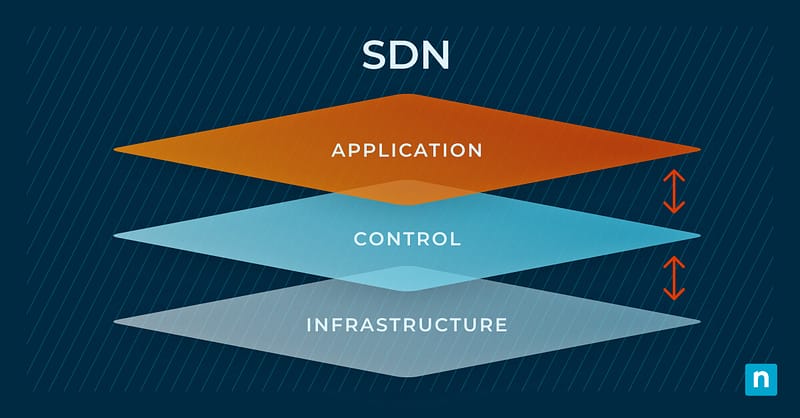Modern networking methodologies have evolved significantly, paving the way for innovations like Software-Defined Networking (SDN). Recent trends, such as increased demand for cloud services, data center virtualization, and the growing complexity of networks, have necessitated more dynamic and flexible network solutions. These advancements have set the stage for SDN by highlighting the limitations of traditional, hardware-centric networking.
The journey towards SDN began with the early development of computer networks. Initially, networks were simple, with limited connectivity and functionality. However, as the internet expanded and technology advanced, the complexity of networks increased exponentially. This evolution culminated in the birth of SDN, a paradigm shift that reimagined the very fabric of network architecture and management.
In today’s digital age, the need for adaptive and flexible networking systems is more pronounced than ever. Enterprises face challenges like managing large-scale, distributed networks and ensuring high availability and security. SDN addresses these needs by providing a more agile and programmable network infrastructure, capable of adapting to the rapidly changing demands of modern digital environments.
📌 A visual presentation of this blog is available—watch What is Software-Defined Networking (SDN)? to better understand how SDN works and how it differs from NFV.
What is Software-Defined Networking?
SDN is a revolutionary approach to network management. It decouples the network control (the brains) from the data forwarding function (the muscle), enabling more efficient network management and operation. This separation allows network administrators to shape traffic from a centralized control console without having to physically handle individual switches, which is a significant departure from traditional networking.
SDN is built on a few key components
- SDN controller: The central “brain”, managing flow control to the networking devices.
- Southbound APIs: Protocols like OpenFlow that relay information between the controller and the switches/routers.
- Northbound APIs: Interfaces that communicate with the applications and business logic “above.”
The role of APIs in SDN is crucial. They facilitate network programmability, allowing for more sophisticated management and automation. APIs enable integration with various network services and applications, significantly enhancing operational flexibility and efficiency.
The history of SDN is marked by important milestones. It began as an academic concept, grew through industry collaborations and standardizations, and has now become a cornerstone in modern network architecture. This evolution reflects the growing demand for more flexible, scalable, and manageable networking solutions.
Why use SDN?
SDN offers several cost-saving advantages over traditional networking:
- Capital expense reduction from reduced hardware dependency: SDN’s reliance on software rather than physical hardware leads to substantial savings in capital expenses, as it minimizes the need for expensive networking equipment.
- Operational cost efficiency via automation and simplification: Through the automation of network management tasks and the simplification of the overall network structure, SDN significantly lowers operational costs.
- Decreased power and cooling costs: By consolidating network functions and reducing the number of physical devices, SDN can significantly lower power consumption and cooling requirements in data centers.
- Longer hardware lifespan: SDN’s ability to centralize and abstract control functions can extend the useful life of existing network hardware, delaying the need for costly upgrades or replacements.
In the realm of cloud computing and big data, SDN enhances network functionality and efficiency. It provides the agility and scalability necessary to support large-scale, distributed computing environments. SDN’s dynamic resource allocation capabilities are particularly beneficial for handling the vast data requirements of big data applications.
SDN’s impact on the Internet of Things (IoT) and edge computing is profound. By offering more flexible and programmable network solutions, SDN facilitates the efficient handling of the massive amounts of data generated by IoT devices. It also supports the low-latency requirements of edge computing applications.
SDN’s strategic importance for businesses and tech infrastructure lies in its ability to provide a more agile, scalable, and secure networking environment. It supports the rapid deployment of new services and applications, adapting swiftly to changing business needs.
How does Software-Defined Networking work?
The SDN control plane is the central component responsible for managing the flow of network traffic. Unlike traditional networks, where each switch or router makes its own decisions, the SDN control plane centralizes this decision-making process, resulting in more efficient and flexible network management.
The data plane in SDN
- Packet forwarding control: In SDN, the data plane manages the actual forwarding of packets, strictly adhering to the instructions set by the control plane, ensuring efficient and targeted data flow.
- Infrastructure comprising physical devices: The data plane is composed of physical switches and routers that are integral in executing the actual data transfer across the network.
- High-speed data handling: Optimized for speed and efficiency, the data plane is designed to handle high volumes of data traffic, ensuring minimal latency in network communication.
- Scalability in network traffic management: The data plane’s configuration in SDN allows for scalable management of network traffic, accommodating varying levels and types of data flow as per network demands.
SDN’s architecture supports dynamic network management through its modular and adaptable framework. It contrasts with conventional network architectures that are static, complex, and hardware-dependent. This modular approach allows for rapid adaptation and scaling of the network to meet changing demands.
When comparing SDN with traditional networking, key differences emerge in architecture, functionality, and operational efficiency. SDN’s centralized control model, programmability, and flexibility offer significant improvements over the rigid and hardware-focused traditional networks.
Types of SDN
SDN models and structures vary, each with unique characteristics. These include:
- Open SDN: Utilizes open-source standards and protocols like OpenFlow.
- Overlay SDN: Creates a virtual network layer over existing hardware.
- Hybrid SDN: Combines traditional networking with SDN features.
Open standards and protocols, such as OpenFlow, play a vital role in the SDN ecosystem. They ensure interoperability between different network components and facilitate the widespread adoption of SDN technologies.
Each type of SDN has typical use cases:
- Open SDN: Often used in research and academic environments.
- Overlay SDN: Popular in cloud services and data centers.
- Hybrid SDN: Suitable for gradual migration from traditional to software-defined networks.
Benefits of Software-Defined Networking
SDN brings a myriad of benefits to network management, making it a valuable asset in modern networking:
Enhanced network agility
- Rapid deployment of network services and applications.
- Dynamic scaling of network resources according to demand.
- Quick response to changing business and technical requirements.
Improved network management efficiency
- Automation of routine network operations.
- Simplified configuration and management through centralized control.
- Reduction in manual errors through programmable network adjustments.
Increased network security
- Centralized security management and consistent policy enforcement.
- Real-time monitoring and response to security threats.
- Enhanced visibility into network traffic for proactive threat detection.
Cost optimization
- Lower capital expenditure due to reduced hardware dependency.
- Operational cost savings through automated processes and efficient resource utilization.
- Reduction in the need for specialized networking hardware.
Scalability and performance
- Seamless scaling of network infrastructure to support growth.
- Optimized network performance through efficient traffic management.
- Enhanced user experience due to reduced latency and improved service quality.
Risks of Software-Defined Networking
Despite its advantages, SDN also presents certain risks that need to be carefully managed:
Security vulnerabilities
- Risks associated with a centralized control plane, including single points of failure.
- Potential exploitation of software vulnerabilities in SDN components.
- Challenges in maintaining security across a dynamically changing network environment.
Integration and compatibility issues
- Difficulties in integrating SDN with existing legacy systems and hardware.
- Compatibility challenges with non-standardized components and protocols.
- The need for extensive testing to ensure seamless integration.
Complexity in management and operations
- Increased complexity in network design and architecture.
- Requirement for advanced skills and training for network administrators.
- Potential for configuration and management errors due to complex systems.
Dependence on vendor technologies
- Risk of vendor lock-in due to proprietary SDN solutions.
- Challenges in adapting to vendor-specific implementations and updates.
- Dependence on vendor support for troubleshooting and updates.
- Utilizing open source SDN solutions can reduce dependency on specific vendors, offering greater flexibility and control over the network environment.
Learning curve and expertise requirement
- Need for specialized knowledge in SDN operation and management.
- Time and resource investment in training IT staff.
- Challenge in keeping up with rapidly evolving SDN technologies and practices.
By addressing these risks effectively, organizations can maximize the benefits of SDN while mitigating potential drawbacks, leading to a more resilient and efficient network infrastructure.
SDN: Steering the course of tomorrow’s network evolution
As we stand at the precipice of a new era in network management, SDN emerges not just as a solution for today’s challenges but as a harbinger of a more interconnected and intelligent digital future. The journey of SDN, from its nascent academic origins to a pivotal force in modern network architecture, signals a profound transformation in how we conceptualize and implement networking solutions. Looking ahead, SDN is poised to become the backbone of an increasingly data-driven, automated world, where its principles of flexibility, efficiency, and programmability will be integral to supporting the next wave of technological innovations.
The evolution of SDN is intrinsically linked to advancements in areas like artificial intelligence, machine learning, and edge computing. As these technologies continue to mature, SDN will play a crucial role in enabling networks that are not only self-organizing and self-healing but also capable of predictive analytics and autonomous decision-making. This symbiosis promises to unlock new potentials in network optimization, security, and scalability, paving the way for networks that are as dynamic and adaptable as the data they transmit.
SDN ultimately stands at the forefront of a networking revolution that will redefine the boundaries of connectivity, security, and efficiency. As we embrace this future, SDN will not only respond to the growing demands of an interconnected world but will actively shape the very fabric of our digital landscape, driving innovation and paving the way for an era of networked intelligence and unprecedented possibilities.








